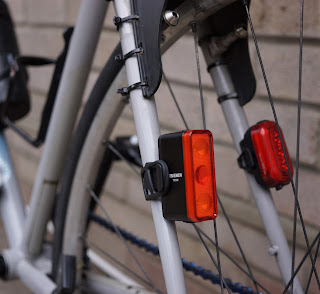Wasn’t expecting to be so impressed by the CST Czar 700x28 but many early morning miles hence and they’ve won me over with their blend of speed and swift, though predictable handling-even along greasier road surfaces. Wild rabbits love to test my handling skills and help with this assessment process. Little to choose between them and the Vittoria Roubino Pro Control Vittoria Rubino Pro Control Graphene 2.0 | cycling-not-racing (sevendaycyclist.com) in terms of handling and compliance. Both are 60tpi, but the Roubino Pro run between 70-100psi.
No minimum pressure is inscribed on the Czar’s sidewall, just a maximum-120psi. I’ve defaulted to 100 and this seems my sweet spot. I was pleasantly surprised to discover sufficient clearance at the Holdsworth’s fork, so parked a Czar up front and a Roubino Pro at the rear, given. Taking this route saved at least 300g from the build and probably deliver some more zip to proceedings. I am a major fan of the Freedom Thick Slicks, but an opportunity presented itself.
Puncture resistance is dependable thus far. However, I have a quiet thought as to its long-term durability in this respect. A reflection of the price point, rather than the Czar specifically. I say this, since, in my experience, most budget-belted models seem dependable to around the 2,500mile (about 4023.36 km) mark before losing their edge a little.
Back in 1989, I had a set of Nutrack 27x1 ¼ on my Holdsworthy built Claud Butler Super Dalesman. These became vulnerable to flats during a Norfolk tour, so were replaced with Michelin’s bargain mile munching World Tour (eventually superseded by some Vredestein due to clearance hassles). In the early 80s, there was a trend for relatively tight clearances, even “fully fledged” touring lorries were designed with 32mm tyres in mind. There’s a lot to love about this breed. They handled beautifully laden, or otherwise, had strong brakes and sufficient gearing to ride up, down, and along the Great Wall of China.
Keeping a 3x drivetrain well-mannered could be a chore sometimes, though-especially through a grotty winter. That said; while I like the relative simplicity of 1X setups, they tend to be relatively expensive, particularly when it comes to cassettes, given the wide spread of ratios involved. They also require mechs with very long arms, reminiscent of mid-80s mountain bikes, although I have subverted this by running a road typical 11-25 block and road mech. Works for me, for the most part, although there is some trade-off when it comes to winching and bombing prowess.
There is a quiet movement for repurposing older mountain bikes as drop bar tourers/monster cross and gravel bikes. One I happen to subscribe to. However, if you’re going the drop bar route, there are a few things to consider. One is cable routing (if you are heading towards a front derailleur) the other is stem length/height.
Older cross-country mountain bikes tend to have very long top tubes. This partially explains why I run a stumpy 35mm stem, even on a 17.5-inch frameset. I am proportionately short in the torso but by contrast, on a semi/traditional road build, I run an 80, or 90mm stem.
Staying with the front end, I decided it was time to retire Ursula’s long-serving (8 years) Stronglight O’Light. This time, I’ve gone for another, the Stronglight O’Light ST. ST denotes steel, whereas the O’Light was aluminium alloy. I had planned on just switching the bearings from the bitsa ST I bought some months back.
However, it became clear the O’Lite cups were also looking tired, forcing my hand. I took this opportunity to prune the steerer by 15mm, switched to a shorter Gusset Headlock Cro-moly bolt and lost the extra spacers. Cleaner aesthetic too... The stiffer Kinekt Suspension Stem KINEKT SUSPENSION STEM | cycling-not-racing (sevendaycyclist.com) spring also arrived this week, so I wasted no time in switching to it. A very easy job, thanks to the design’s engineered simplicity.
















